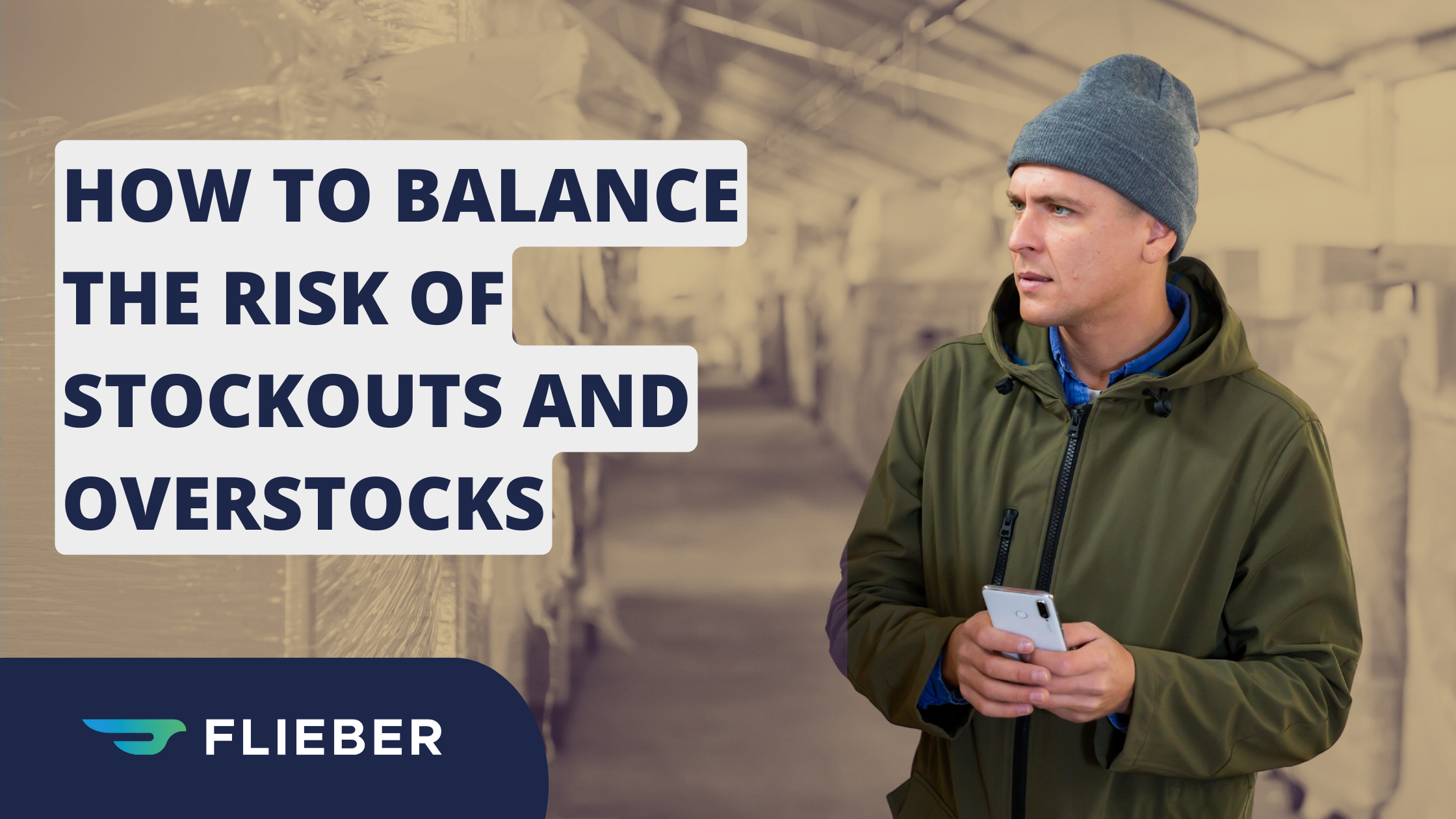Stockouts and overstocks are part of the game in modern commerce. But that doesn’t mean you can’t control their impact on your business.
As a retailer, it’s your job to make sure you have enough of your bestsellers to satisfy demand, while avoiding the trap of overstocked inventory.
Today, we’re taking a closer look at the risks involved with stockouts and overstocks, and sharing practical tips to help you strike the right balance.
Stockouts vs. overstocks: which one’s worse?
In a word: overstocks. While there’s certainly a level of risk involved with managing your bestsellers, in a volume-based business like retail, the biggest risk is always going to lie with the products that don't sell.
Before we dive into ways you can balance the risk of stockouts and overstocks, let’s look at two of the most common overstock scenarios.
Overstocks due to ordering according to your MOQs
Let’s say you have a supplier that requires minimum order quantities (MOQs) of at least 300 units. But if you have a product that sells one unit per week and you have 300 units in inventory, that’s 300 weeks — roughly six years — of product just sitting there racking up carrying costs.
Without visibility into how each of your products is selling, it’s easy to fall into the trap of ordering based on MOQs. Suddenly, you’re overstocked with no way to offload the extra units. Sure, you could run promotions, but these products typically don’t have the rankings or awareness levels you need to sell at the pace and price you want. And why spend a bundle in advertising only to sell at a loss?
The end result is lower margins and less free flowing capital in your business.
Unforeseen issues with products that normally sell well
Sometimes you have a product that typically sells well, but due to external circumstances, it suddenly becomes impossible to shift these units. Though less common, this scenario is just as painful.
I still remember hitting a home run with a new kitchen product on Amazon. The product was selling like gangbusters. We had just ordered 10,000 units in replenishments. My team and I were thrilled.
That is, until we received a letter from a lawyer saying, ‘Hey, this product is patented.’
Writing the check to pay for the container, then paying for a truck to bring the products to the warehouse, only for us to throw them all away, was one of the most painful moments in my retail career.
Whether it’s IP challenges, supplier issues, or any number of other complications, in this scenario you’re only overstocked because of external forces. So, what can you do about it?
Focus on keeping your top 20% of products in stock
No matter what challenges you’re currently facing in your inventory, there are really only two types of products: those that sell and those that don't.
To make sure you have the right products in stock, use the Pareto Principle (a.k.a. the 80/20 rule) to reframe how you think about your portfolio:
- Products that sell: the 20% of products that usually contribute to around 80% of your sales
- Products that don’t sell: the 80% of products that usually contribute to only around 20% of your sales
While excess inventory is a known business-killer, the truth is it's a lot easier to solve overstocks than stockouts.
To grow your retail business without sacrificing your margins, the key is to spend more of your energy on the 20% of products that are bringing in the real money.
Here are some tips to keep the right balance:
- Know your slow-movers: Which 80% of products contribute only 20% of your sales? Get visibility into the products that aren’t selling, so you can spend more time managing the ones that are.
- Understand your MOQs: Out of these 80%, which slow-moving products will allow low MOQs with your suppliers? The goal is to avoid tying up capital in inventory you know won’t sell.
- Negotiate with your suppliers: Suppliers know slow-moving inventory is an issue in this business. In many cases, they’ll not only accept low MOQs, they'll also accept a little more risk. After all, they also want to sell more products. See if you can loosen the terms a bit, for example, by asking them to give you the option to cancel part of the order in exchange for credit for other products in the event that you don’t need the full MOQ.
- Prioritize your bestsellers: With a clear view of your top-movers, you’ll be able to better plan your stock purchases and take action to prevent stockouts, like raising prices or reducing advertising.
Remember, the 20% of top performers are generating the vast majority of sales for your business. They’re always going to have a bigger impact on your success.
Even if the worst happens and a momentary stockout occurs, you can usually regain your sales traction quickly, without worrying about ending up with years of overstock eating into your margins and keeping your capital trapped.
Of course, you still need to take the necessary steps to reduce the risk of overstocks. Let’s take a closer look at that remaining 80%.
Avoid overstocking the remaining 80% of your inventory
There’s a reason all retail companies die poor in cash, rich in stock.
When you really boil it down, retail is a machine. You put capital (in the form of inventory) in and you get the same capital you put in, plus profit, out. But what happens if capital gets trapped inside the machine?
In this case, the machine never spits out the profit. You don't have enough money to pay your team, grow your other products, or invest back into your brand.
The following steps will help reduce the risk of overstocks:
- Use data to analyze past product performance: With clean, centralized data across all sales channels and inventory locations, you’ll be able to adjust your inventory to match your sales pace and avoid over-ordering.
- View your products at the portfolio level: Consider the lifecycle phases of each product to know when to push or reduce sales. For example, you can de-prioritize products with a defined lifetime, like apparel collections or electronics, as soon as they go out of season to free up more time and resources for your top sellers.
- Look for ways to minimize your MOQs: This could mean grouping products, negotiating with suppliers, or exploring alternative suppliers who offer more flexible minimum order quantities.
At the end of the day, overstocking with the 80% of the products that only support 20% of revenue is what kills retail companies.
But with a clear window into what’s really happening with your inventory, you can avoid these mistakes and maintain healthy inventory levels as you grow.
Finding the sweet spot with inventory
There’s no denying it: both stockouts and overstocks are bad for business.
Fortunately, the key to better inventory planning is simpler than most of us realize. It all comes down to visibility.
With Flieber, you can see exactly what's happening with your inventory now and in the future. Customizable scenario planning shows you exactly what will happen if you buy a certain number of units, including whether you’ll be stocked out or overstocked, and how much capital you’ll have tied up in inventory.
Understand which products are making you money vs. which ones aren’t. Flieber gives you everything you need to make better, more profitable decisions for your business. Sign up for your free trial to learn more.



-1.png)

